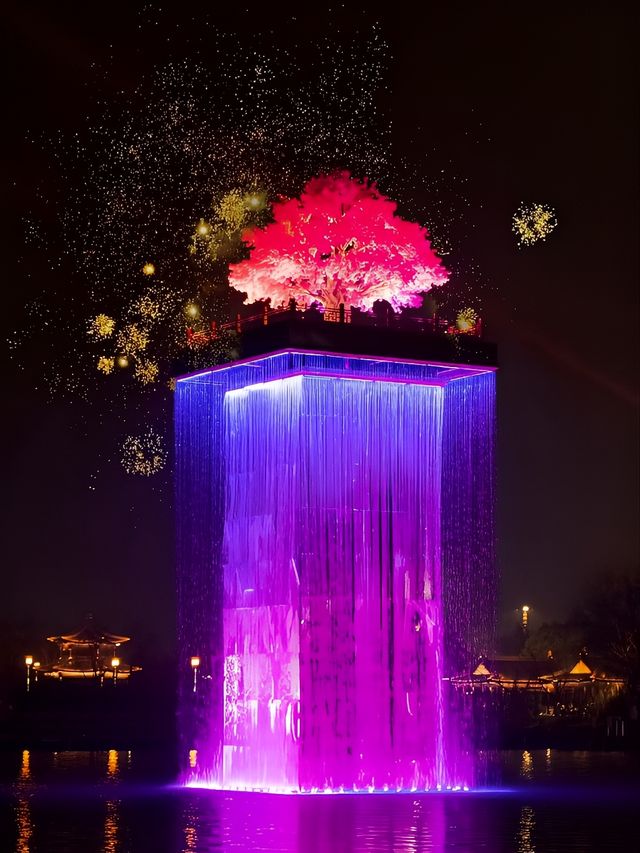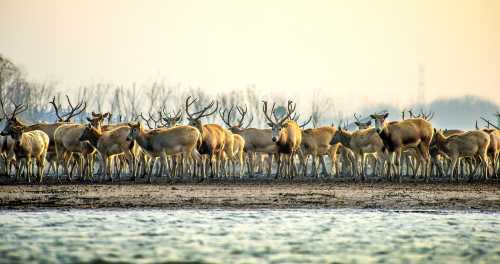Popular Trip Moments
Explore the Dutch Flower Sea and Encounter a Spring Dream | Dongtai, Jiangsu | Eastern Romance in an Ancient Town | Close to Yangpu Binhai Cultural Plaza | Visit them all and you're a pro! | Yancheng, Jiangsu! A seriously underrated gem of a small town | A seriously underrated treasure trove of unique architecture and scenery | Lunar New Year Family Fun at Andersen Fairy Tale Park in Sheyang | One-day tour of Yancheng countryside | 30km self-driving route for niche filming | Jiangsu reverse tour: an underestimated treasure town with a festive New Year atmosphere!! | Wow! I’m going to announce that my favorite thousand-year-old town of the year is here! | Yancheng Hilton DoubleTree Hotel, a cost-effective hotel, highly recommended! | Jiangsu locals are tight-lipped! 99% of people don't know about this hidden gem travel destination | This hotel is the best value for money in Yancheng! | Yancheng Marriott Hotel, a luxurious journey | Reverse Travel | Found a Dream Fairy Tale Park in Yancheng | Listen to the mountains and smell the greenery at Mangshe River Ecological Corridor in Yancheng | Go to Dafeng, Yancheng to see elk 🫎Tanzania for people from Jiangsu, Zhejiang and Shanghai | Yancheng - Dongtai Huanghai Forest Park | Yancheng Water Street is best visited at night | Family members! I went to see the tulips happily, but came out crying | Meet the winter forest, the dawn redwood is red in the lens | You would never have thought that this Yancheng hotel would be so amazing! | Visiting Yancheng Dazong Lake in winter is simply amazing! | Late but here it is, the first red of 2025! | You would never have thought that Yancheng is home to such a vacation paradise! | A forgotten treasure city, it’s really photogenic to take photos and check in! | I didn't go to Tanzania, I went to Yancheng, Jiangsu | As a 5A-level scenic spot, it is actually a bit mediocre. | My friends thought I went to Finland to feed reindeer! | Dazong Lake: A Poetic Encounter in the Water Town
Popular Travel Types
Recommended Attractions at Popular Destinations
Bangkok attraction near me | Manila attraction near me | Tokyo attraction near me | Taipei attraction near me | Hong Kong attraction near me | Seoul attraction near me | Kuala Lumpur attraction near me | Los Angeles attraction near me | Shanghai attraction near me | New York attraction near me | Shenzhen attraction near me | Osaka attraction near me | Singapore attraction near me | London attraction near me | Guangzhou attraction near me | San Francisco attraction near me | Beijing attraction near me | Macau attraction near me | Bali attraction near me | Jakarta attraction near me | Paris attraction near me | Ho Chi Minh City attraction near me | Istanbul attraction near me | Phuket attraction near me | Chicago attraction near me | Seattle attraction near me | Toronto attraction near me | Orlando attraction near me | Cebu attraction near me | Chiang Mai attraction near me
Popular Attractions
Ski Dubai | Apartheid Museum | Dubai Yacht Tourism | Dubai Creek | Giethoorn | Meridian Cruise | Mount Entoto | IMG Worlds of Adventure | Moulin Rouge | Rhine Falls | Museum of The Future | Ko Samet | Mingsha Mountain And Crescent Spring | Fairy Stream, Mui Ne | Zhangjiajie National Forest Park | Sunlight Rock | Shuzhuang Garden | Tekala River Recreation Forest | Hengshan Mountain College | Zhanqiao Park | La Geltru | Marina di Ginosa | Đỉnh Hàm Lợn | Football field "Los Jales" | Biblioteca Comunale di Campagnola Emilia | Nashoba Brook Watershed Trails | Shagai Masjid | Shitla Mata Mandir - Mahananda Nagar | Mini futbol | TUGU PSHT BLIMBING RANTING DOLOPO Sub Rayon Krajan
Popular Restaurants in Yancheng
Bihualizhuangyuan | 星伦多海鲜自助(聚龙湖金鹰2店) | DQ | 七欣天品蟹轩(盐城八佰伴店) | LING XIANG CAN TING YAN MA LU DIAN | 炉鱼(盐城中南城店) | 格丽思(南金鹰聚龙湖店) | SU XIAO ZHU | 7分甜(中南城店) | 米肠汤饭(文港路店) | Wawajiaoganguoniandai | 星巴克(盐城五洲国际店) | 北疆饭店(宝龙店) | WEI FU | 胡桃里音乐酒馆(滨河路店) | Dingdangmao Cuisine (baolong) | 蘇小主·创意中国菜(盐城金鹰店) | Chongqinggaolaojiu Hot Pot (yanchengjianjun) | Shanyuqiangsubeicai | GE LI SAI DAN GAO DIAN ZHONG NA CHENG DIAN | 一杯美式cafe(解放路店) | 西湖人家嗯啦东南亚餐厅(盐城宝龙广场店) | Daimei Hot Pot (jianjundonglu) | 黄记煌三汁焖锅(宝龙店) | 蘇小主·创意中国菜(盐城中南城店) | 胖哥俩肉蟹煲(盐城大有境店) | 本素酸菜鱼(盐城城中店) | 爸爸糖手工吐司(盐城凤凰汇店) | 大唐锅物料理(建湖店) | HAN GONG YAN JIN YING JU LONG HU DIAN
Popular Ranked Lists
Popular Luxury Hotels Near Kaluga | Popular Premium Hotels in Gazi Baba | Popular Luxury Hotels Near Weggis | Top 7 Best Things to Do in Ji'an | Popular Luxury Hotels Near Washington D.C. | Top 8 Local Restaurants in Jiujiang | Popular Local Restaurants in Paris | Top 19 Local Restaurants in Guiyang | Popular Luxury Hotels Near Le Pontet | Popular Luxury Hotels in Ras Al Khaimah | Top 11 Best Things to Do in Krabi | Top 9 Local Restaurants in Changshu | Popular Premium Hotels in Hervey Bay | Top 10 Local Restaurants in Cairns | Popular Best Things to Do in Pattaya | Top 11 Local Restaurants in Zhenjiang | Top 4 Best Things to Do in Haibei | Popular Luxury Hotels Near Merida | Top 4 Best Things to Do in The Rocks | Top 17 Local Restaurants in Xuzhou | Top 5 Best Things to Do in Huaihua | Popular Luxury Hotels Near Yeroskipou | Top 5 Best Things to Do in Daxing'anling | Top 17 Local Restaurants in Yokohama | Top 9 Local Restaurants in Mandalay | Popular Luxury Hotels Near Marburg | Popular Best Things to Do in Hengshan | Popular Luxury Hotels Near Salamanca | Top 7 Best Things to Do in Phi Phi Islands | Popular Luxury Hotels Near Dubrovnik
Payment Methods
Our Partners
Copyright © 2025 Trip.com Travel Singapore Pte. Ltd. All rights reserved
Site Operator: Trip.com Travel Singapore Pte. Ltd.
Site Operator: Trip.com Travel Singapore Pte. Ltd.

















